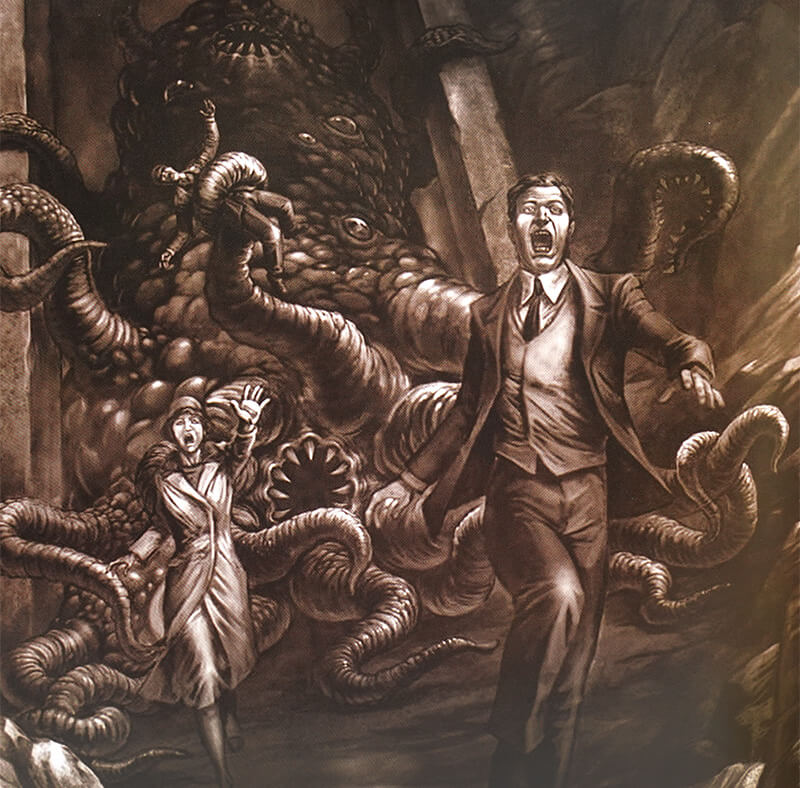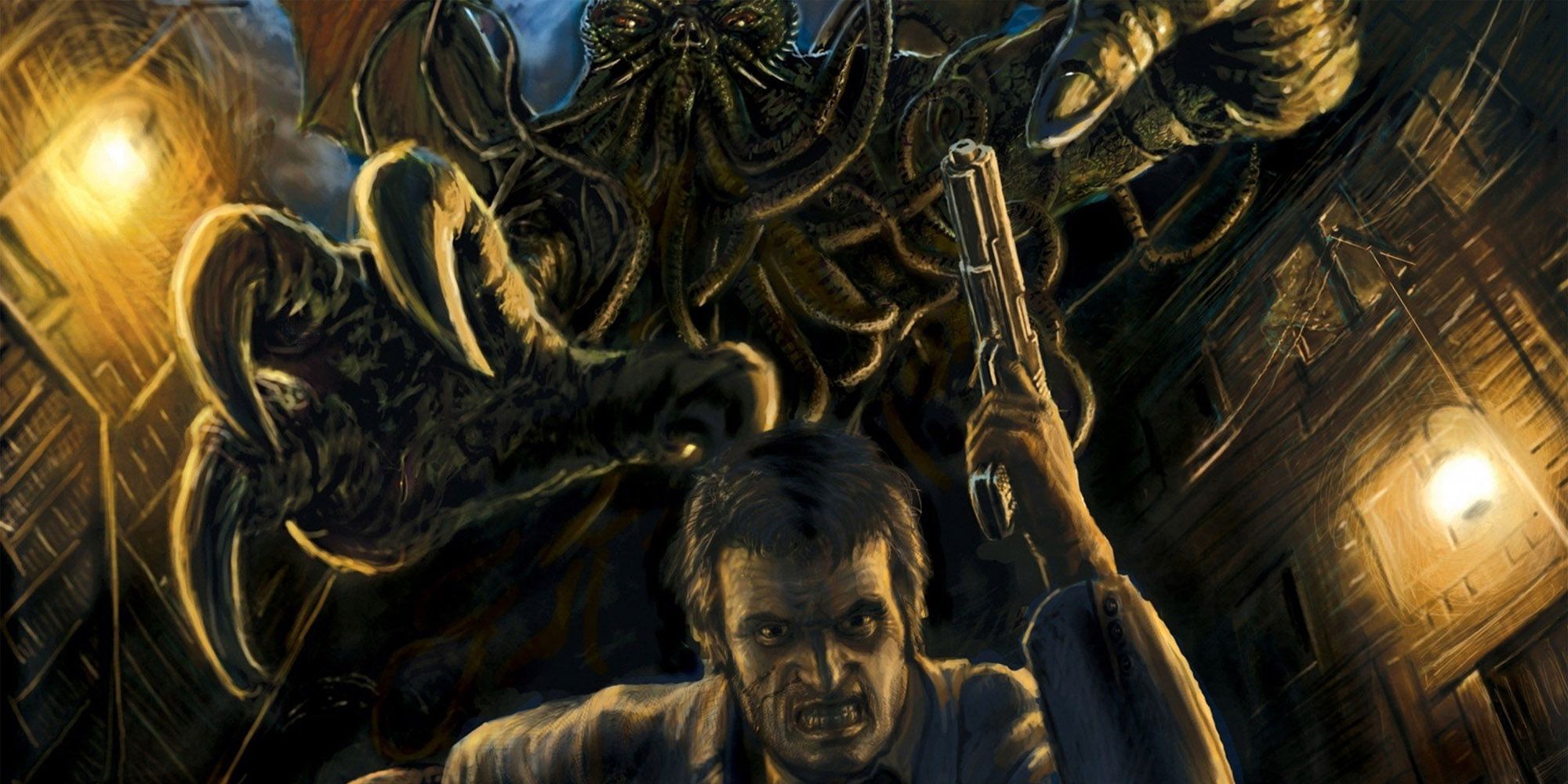My journey into the eldritch universe of H.P. Lovecraft commenced not through digital or tabletop games, but via the pages of his haunting tales. It was Lovecraft’s written works that first introduced me to the themes of cosmic dread, madness, and the triviality of humanity against the backdrop of ancient, enigmatic entities. This literary foundation profoundly shaped my understanding and appreciation of Lovecraftian horror, setting the stage for further exploration. Inspired by the intricate narratives and atmospheric depth of Lovecraft’s stories, I was drawn to the “Call of Cthulhu” video game, an immersive adventure steeped in the same cosmic horror and psychological thrills that captivated me in his writings. The video game’s digital rendition of Lovecraft’s universe left a lasting impression, compelling me to dive even deeper into that world. This sequential progression from Lovecraft’s stories to the video game and finally to the tabletop role-playing game (TTRPG) was not merely a transition across mediums but a significant expansion of my engagement with Lovecraftian horror. “Call of Cthulhu,” as a tabletop role-playing game, stands as a seminal work in the genre, distinguished by its commitment to atmosphere, narrative depth, and the psychological intricacies of its gameplay. It diverges significantly from the more combat-oriented or high-fantasy settings of its contemporaries, offering instead a journey into the macabre universe inspired by the works of H.P. Lovecraft.

“Call of Cthulhu” leverages a thematic core rooted in cosmic horror and existential dread, challenging players not with conquests of power but with the survival of their characters’ sanity in the face of incomprehensible truths. The game operates under the Basic Role-Playing (BRP) system, emphasizing simplicity and versatility. Its mechanics, centered around percentile dice rolls, facilitate a gameplay experience that prioritizes narrative progression and character development over the accumulation of power or wealth.
The sanity mechanic is perhaps the most distinctive aspect of “Call of Cthulhu.” It quantifies characters’ psychological resilience against the horrors they encounter, a concept that not only serves as a critical gameplay element but also as a medium-specific narrative device. This mechanic directly influences player interactions, fostering a gameplay environment where decision-making is as much about preserving one’s mental integrity as it is about solving mysteries or overcoming physical challenges. The game’s emphasis on investigation over combat further distinguishes its player dynamics. Cooperative strategy becomes essential, with players often needing to pool their characters’ knowledge and skills to unravel the game’s intricate plots without falling to madness.
Unlike many TTRPGs where objectives are clear-cut and often oriented towards victory or achievement, “Call of Cthulhu” posits survival and knowledge as its ultimate goals. The game’s alignment with Lovecraftian themes presents a universe where human understanding is limited, and the pursuit of forbidden knowledge can lead to one’s undoing. This narrative approach challenges players to reconsider their motivations and strategies within the game, promoting a more reflective and immersive experience. The game’s objectives thus extend beyond the diegetic world, prompting players to engage with philosophical questions concerning knowledge, existence, and the human condition.
“Call of Cthulhu” innovates within the TTRPG medium through its integration of horror elements that are as much psychological as they are narrative. The game’s rule system and mechanics, designed to simulate the stress and terror of confronting Lovecraftian horrors, serve to enhance the thematic depth and atmospheric immersion. The use of the sanity mechanic, in particular, exemplifies how medium-specific features can be employed to reinforce thematic content and bridges mechanics with narrative to create a cohesive and compelling gameplay experience.
Furthermore, the game’s reliance on detective work and puzzle-solving introduces a layer of intellectual engagement uncommon in more combat-focused TTRPGs. This shift not only diversifies the kinds of player interactions and strategies that emerge but also deepens the role-playing aspect, encouraging players to fully inhabit their characters and engage with the game world in a nuanced and thoughtful manner.
“Call of Cthulhu” stands as a landmark in TTRPG design, distinguished by its successful fusion of genre-defining mechanics and a rich, atmospheric narrative inspired by the cosmic horror of H.P. Lovecraft. The game challenges traditional notions of power and progress in TTRPGs, offering instead a nuanced exploration of fear, madness, and the limits of human understanding. Through its innovative use of the sanity mechanic, emphasis on investigation and narrative progression, and the depth of player engagement it fosters, “Call of Cthulhu” not only enriches the TTRPG genre but also extends the possibilities of storytelling within it. Its enduring popularity and influence testify to the compelling nature of its gameplay and the universality of its themes, cementing its status as a classic in the realm of tabletop gaming.
Review by Erin Matthews
